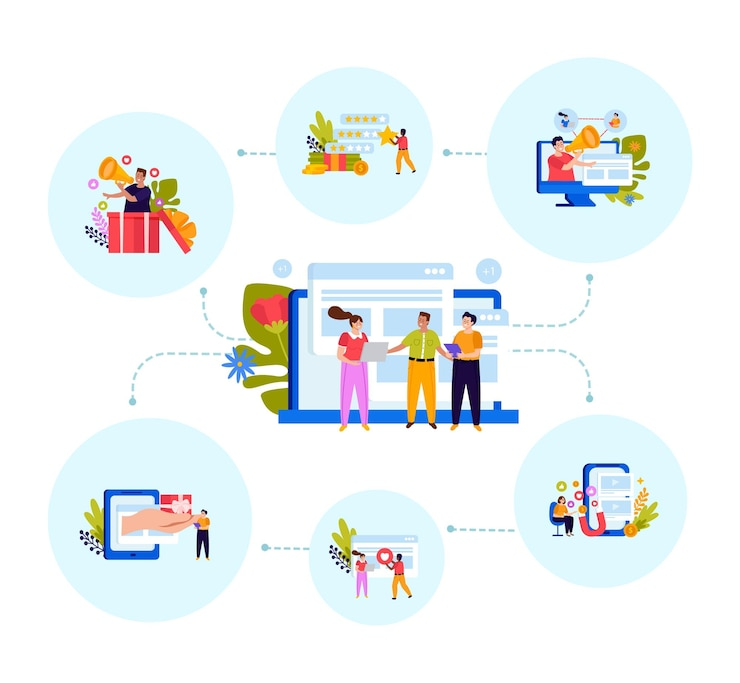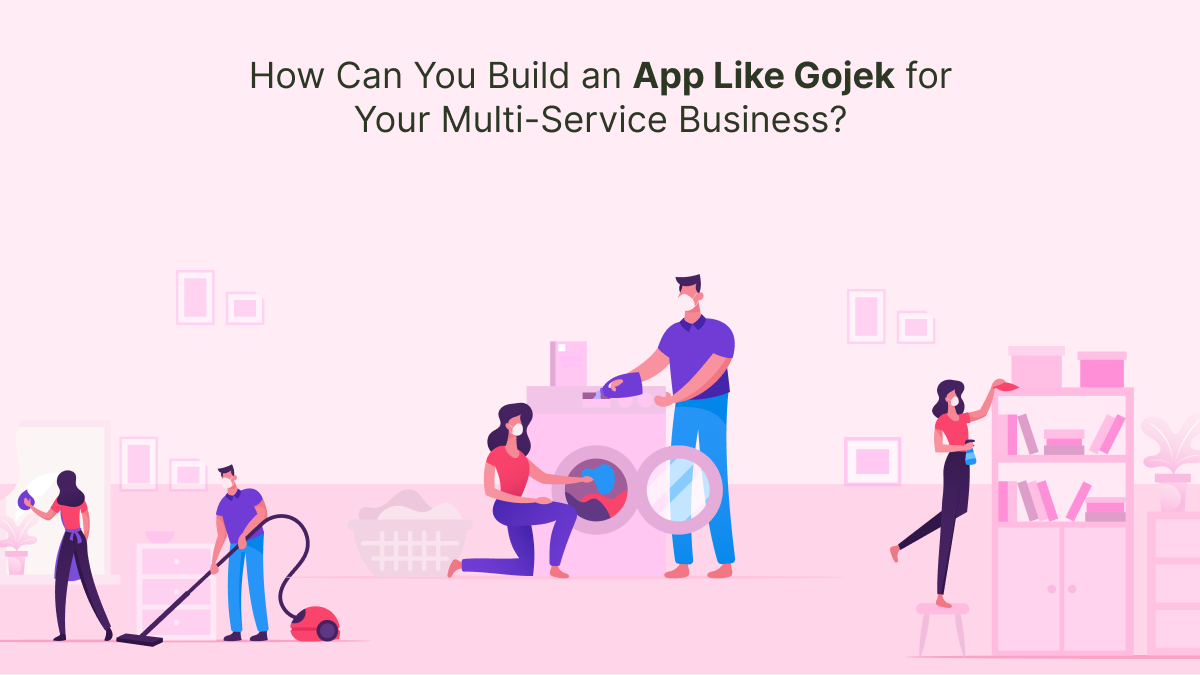Multi-service apps like Gojek have changed the way people access everyday services. From ride-hailing to food delivery, home services, and payments, these apps provide everything under one platform. Entrepreneurs and business owners are interested in launching similar apps because they offer convenience, increase customer engagement, and generate multiple revenue streams. However, building an app like Gojek requires more than just coding. It involves planning, understanding customer needs, developing a scalable platform, and creating a strong business model. In this blog, we will guide you step by step on how to build an app like Gojek for your multi-service business.
Understanding the Multi-Service App Model
A multi-service app combines multiple services into one platform. Users can book rides, order food, schedule home services, or send packages without switching between different apps. This model is convenient for customers and profitable for businesses because it creates multiple revenue streams and encourages loyalty.
Why Multi-Service Apps Are Successful
Customers today prefer simplicity and speed. Instead of managing several apps for different needs, they want one solution that handles all services. For businesses, this model allows cross-selling, increases user engagement, and reduces marketing costs. Multi-service apps also attract investors because they show higher growth potential than single-service apps.
Components of a Multi-Service App
To build a successful multi-service app, you need three main components: the user app, the service provider app, and the admin panel. The user app allows customers to book services, track orders, and make payments. The service provider app helps providers accept requests, manage schedules, and track earnings. The admin panel gives the business complete control over operations, including managing users, providers, services, and revenue.
Planning Your Multi-Service App
The first step in building an app like Gojek is careful planning. Define your target audience, identify their needs, and decide which services to include initially. Start with a few high-demand services and expand gradually.
Market Research
Conduct thorough research to understand competitors, customer expectations, and market gaps. Study existing apps and analyze their strengths and weaknesses. Talk to potential users to learn about their pain points and what they want from a multi-service app.
Selecting the Right Services
While Gojek offers a wide range of services, launching all at once may be challenging for a new business. Start with essential services like ride-hailing, food delivery, or home services. Adding services gradually ensures quality and helps you manage operations effectively.
Revenue Model
Define how your app will earn revenue. Multi-service apps usually make money through commissions on services, subscription plans for providers, advertising, and premium features. Having a clear revenue strategy is essential to attract investors and ensure long-term sustainability.
Developing Your Multi-Service App
After planning, the next step is app development. The quality of your app determines user experience, retention, and growth.
Choosing the Right Technology
Select a technology stack that is scalable, secure, and capable of handling multiple services. Real-time tracking, secure payment processing, and high-performance servers are essential. Many businesses use ready-made solutions like a gojek clone app to reduce development time, save costs, and accelerate launch.
Designing a User-Friendly Interface
The app should be simple and intuitive. Customers should be able to browse services, place orders, and make payments in a few taps. Service providers should find it easy to accept requests, track tasks, and manage schedules. A clean and user-friendly design improves engagement and reduces drop-offs.
Testing and Quality Assurance
Before launching, conduct rigorous testing to identify bugs, glitches, or usability issues. Test the app under different scenarios to ensure smooth performance. Quality assurance is crucial because technical problems can lead to negative reviews and lost users.
Launching Your Multi-Service App
Launching the app involves more than uploading it to app stores. Marketing, provider onboarding, and operational readiness are equally important.
Marketing Strategy
Create a marketing plan to attract both users and service providers. Use social media campaigns, referral programs, local promotions, and influencer collaborations. Highlight the convenience, affordability, and variety of services your app offers.
Onboarding Service Providers
Service providers are critical to your app’s success. Make it easy for them to join, verify their credentials, and provide tools to manage requests efficiently. Happy and motivated providers lead to satisfied customers and higher retention.
Customer Support
Offer reliable support to address queries, complaints, or technical issues. A responsive support system builds trust and encourages repeat usage.
Scaling Your Multi-Service App
Once your app is launched and running smoothly, the focus shifts to growth and scalability.
Adding More Services
Gradually introduce new services based on demand and operational capability. Controlled expansion ensures consistent quality and avoids overwhelming your team.
Expanding to New Locations
Move into additional cities and regions to increase your user base. Conduct local research to comply with regulations and understand customer preferences.\
Read More: How Gojek Clone Apps Help Businesses Cut Costs and Boost Revenue
Technology Upgrades
As your user base grows, upgrade the app to handle increased traffic. Introduce new features like AI-based recommendations, loyalty programs, and in-app chat support to improve the experience.
Partnerships and Collaborations
Collaborate with restaurants, delivery providers, local businesses, and other service professionals to expand service options. Partnerships help reduce costs, improve service quality, and increase reach.
Challenges to Anticipate
Building a multi-service app comes with challenges such as intense competition, regulatory hurdles, and managing multiple providers. Maintaining high-quality service while scaling operations can also be difficult. However, with proper planning, technology, and operational strategies, these challenges can be managed.
Competition
The on-demand service market is competitive. Offering superior customer experience, unique features, and reliable services is crucial to stand out.

Operational Management
Coordinating multiple services, payments, and service providers requires robust management systems and an efficient admin panel.
Safety and Compliance
Ensure that all service providers are verified and trained. Follow local regulations for transportation, delivery, and other services to avoid legal issues.
Conclusion
Building an app like Gojek requires careful planning, high-quality technology, and efficient operations. By starting with essential services, creating a user-friendly platform, and focusing on customer experience, entrepreneurs can build a successful multi-service app. Revenue can be generated through commissions, subscriptions, advertising, and premium services. For businesses looking to enter the on-demand market quickly, using ready-made solutions like an uber clone app can save time, reduce costs, and accelerate launch. Following these steps can help your business avoid common pitfalls and create a platform that scales successfully.
Frequently Asked Questions
What is a multi-service app?
A multi-service app offers different services like ride-hailing, food delivery, home services, and more under a single platform.
How does an app like Gojek earn revenue?
It earns money through commissions on transactions, subscription plans for providers, advertising, and premium features.
Can all services be launched at once?
It is better to start with a few core services and expand gradually to maintain quality and manage operations efficiently.
How important is technology for a multi-service app?
Technology is essential for real-time tracking, secure payments, scalability, and delivering a smooth user experience.
Is using a ready-made solution beneficial?
Yes, ready-made solutions like an uber clone app save development time, reduce costs, and allow faster market entry while maintaining quality.


